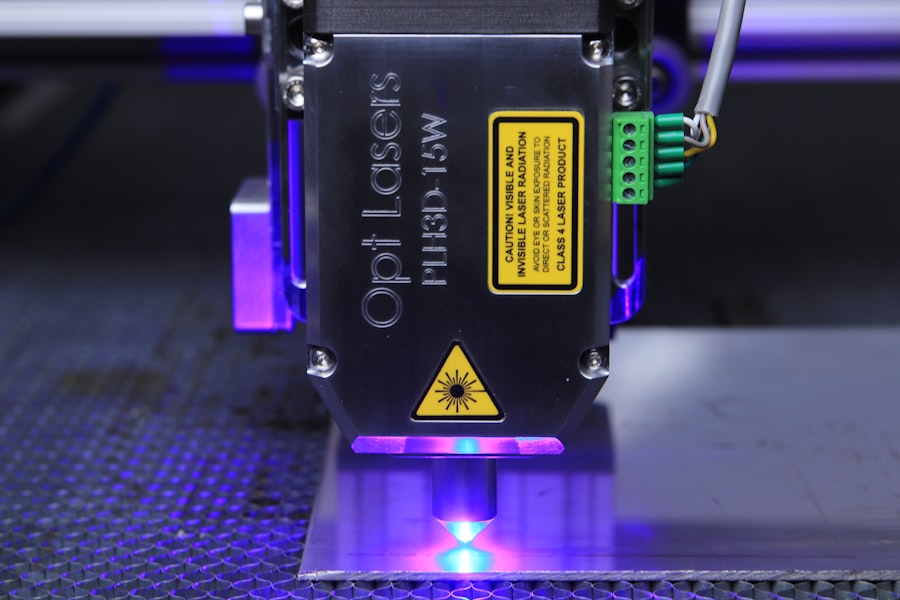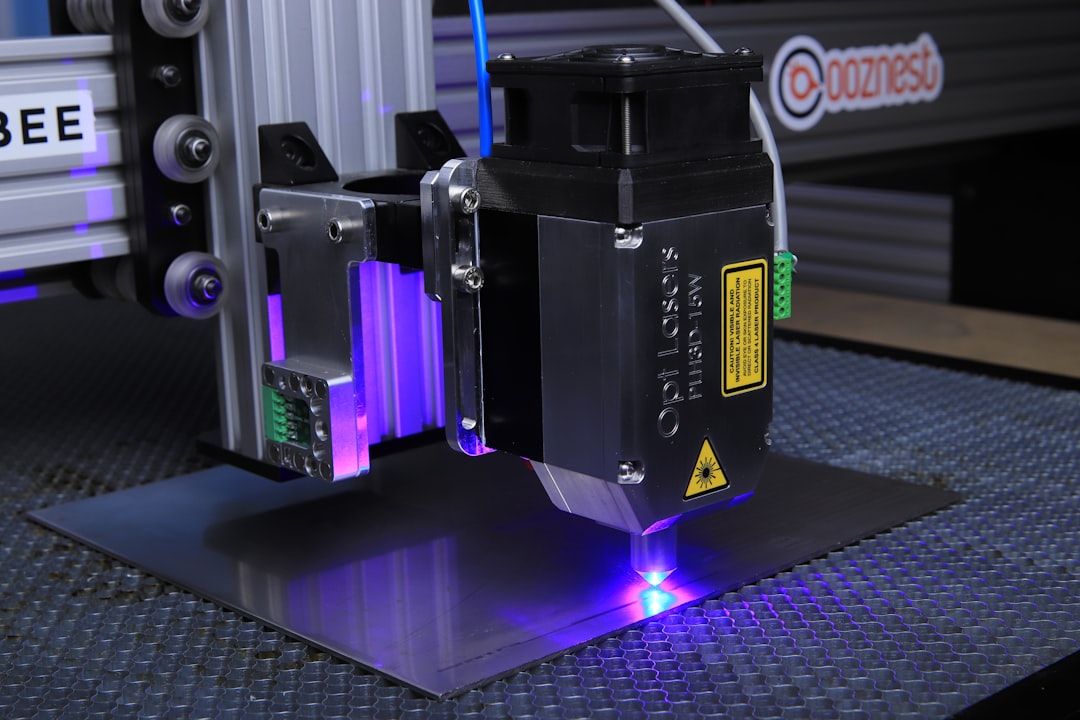Laser hair removal is a popular cosmetic procedure that utilizes concentrated beams of light to target and eliminate unwanted hair. The technology behind this method is based on the principle of selective photothermolysis, where the laser light is absorbed by the pigment in the hair follicles. This absorption generates heat, which effectively damages the follicle and inhibits future hair growth.
As you consider this option, it’s essential to understand how the process works and what to expect during your treatment sessions. During a typical laser hair removal session, a trained technician will use a handheld device to deliver laser pulses to the treatment area. You may feel a slight tingling sensation or a mild snapping feeling as the laser targets the hair follicles.
The procedure is generally quick, with smaller areas taking only a few minutes and larger areas requiring more time.
Understanding these aspects can help you set realistic expectations and prepare for the journey ahead.
Key Takeaways
- Laser hair removal uses concentrated light to target and destroy hair follicles, leading to long-term hair reduction.
- Risks of laser hair removal include skin irritation, pigment changes, and the possibility of burns or scars.
- The benefits of laser hair removal include long-lasting results, reduced ingrown hairs, and smoother skin.
- Good candidates for laser hair removal are individuals with light skin and dark hair, as the laser targets the pigment in the hair.
- Before laser hair removal, it’s important to avoid sun exposure and certain hair removal methods like plucking or waxing.
- Aftercare for laser hair removal may include applying soothing creams and avoiding sun exposure to prevent complications.
- Long-term results of laser hair removal can include significant hair reduction, but maintenance sessions may be needed for optimal results.
- Alternative hair removal methods to consider include shaving, waxing, and electrolysis, each with their own pros and cons.
Risks of Laser Hair Removal
While laser hair removal is considered safe for many individuals, it is not without its risks. One of the most common side effects is skin irritation, which may manifest as redness, swelling, or a mild rash in the treated area. These symptoms typically subside within a few hours to a few days.
However, it’s crucial to be aware that more severe side effects can occur, such as blistering or changes in skin pigmentation. If you have darker skin, you may be at a higher risk for pigmentation changes, so discussing your skin type with your technician is vital. Another potential risk involves eye injury, particularly when treating areas near the eyes, such as the upper lip or eyebrows.
Protective eyewear is usually provided during the procedure to minimize this risk. Additionally, if you have certain medical conditions or are taking specific medications, you may be advised against undergoing laser hair removal. It’s essential to have an open dialogue with your practitioner about your medical history and any concerns you may have before proceeding with treatment.
Benefits of Laser Hair Removal

The benefits of laser hair removal extend beyond just the immediate results of smoother skin. One of the most significant advantages is its long-term effectiveness. Unlike traditional methods such as shaving or waxing, which require frequent maintenance, laser hair removal can lead to permanent hair reduction after a series of treatments.
This means less time spent on grooming and more freedom in your daily routine. Additionally, many individuals find that laser hair removal is less painful than other hair removal methods. While some discomfort may be experienced during the procedure, it is often described as tolerable compared to waxing or threading.
Furthermore, laser hair removal can be performed on various body parts, including sensitive areas like the face and bikini line, making it a versatile option for many people. The convenience and efficiency of this method make it an appealing choice for those looking to simplify their beauty regimen.
Who is a Good Candidate for Laser Hair Removal?
| Criteria | Description |
|---|---|
| Hair Color | People with dark hair are the best candidates for laser hair removal as the laser targets the pigment in the hair follicle. |
| Skin Tone | Light skin tones are ideal for laser hair removal as the contrast between the hair and skin makes it easier for the laser to target the hair follicle. |
| Hair Thickness | Thicker hair responds better to laser treatment compared to finer hair. |
| Health Conditions | Individuals with certain health conditions or taking specific medications may not be suitable candidates for laser hair removal. |
| Age | Adults are generally better candidates for laser hair removal as the hair growth patterns are more predictable compared to younger individuals. |
Determining whether you are a good candidate for laser hair removal involves several factors, including your hair color, skin type, and overall health. Generally, individuals with light skin and dark hair tend to see the best results because the contrast allows the laser to target the pigment in the hair more effectively. However, advancements in technology have made it possible for people with darker skin tones to benefit from laser treatments as well.
It’s also important to consider your health history when evaluating candidacy for this procedure. If you have certain skin conditions, such as eczema or psoriasis, or if you are pregnant or nursing, you may need to postpone treatment until it is safe for you to proceed. Consulting with a qualified practitioner can help you assess your suitability for laser hair removal and address any concerns you may have about the process.
Preparing for Laser Hair Removal
Preparation is key to ensuring a successful laser hair removal experience. Before your appointment, it’s advisable to avoid sun exposure for at least two weeks prior to treatment.
Additionally, refrain from waxing or plucking hairs in the treatment area for several weeks leading up to your session; shaving is typically recommended instead, as it leaves the hair follicle intact while removing surface hair. On the day of your appointment, arrive with clean skin free from lotions or creams that could interfere with the laser’s effectiveness. Your technician may provide specific instructions tailored to your individual needs, so be sure to follow them closely.
Being well-prepared not only enhances your comfort during the procedure but also contributes to achieving optimal results.
Aftercare and Recovery
After undergoing laser hair removal, proper aftercare is essential for ensuring smooth recovery and minimizing potential side effects. Immediately following the procedure, you may experience some redness and swelling in the treated area; this is normal and should subside within a few hours to a few days. Applying a soothing aloe vera gel or cold compress can help alleviate discomfort and reduce inflammation.
It’s crucial to avoid sun exposure for at least two weeks post-treatment, as your skin will be more sensitive and susceptible to sunburn. Wearing sunscreen with a high SPF is highly recommended if you must go outdoors. Additionally, refrain from engaging in activities that may cause excessive sweating or irritation in the treated area for a few days following your session.
By adhering to these aftercare guidelines, you can promote healing and enhance your overall results.
Long-Term Results and Maintenance
One of the most appealing aspects of laser hair removal is its potential for long-term results. Many individuals experience significant hair reduction after completing their initial treatment sessions, often requiring only occasional maintenance treatments thereafter. The exact number of sessions needed varies based on individual factors such as hair growth cycles and treatment areas; however, most people find that they enjoy smoother skin for months or even years after their last session.
To maintain optimal results, it’s advisable to schedule follow-up appointments as recommended by your practitioner. These maintenance sessions are typically less frequent than initial treatments and can help address any regrowth that may occur over time. By committing to this maintenance routine, you can enjoy the benefits of laser hair removal long into the future.
Alternative Hair Removal Methods
While laser hair removal offers numerous advantages, it’s essential to consider alternative methods that may suit your needs better. Traditional options like shaving are quick and convenient but often result in stubble and require frequent upkeep. Waxing provides longer-lasting results but can be painful and may cause skin irritation for some individuals.
Other alternatives include depilatory creams that dissolve hair at the skin’s surface; however, these products can sometimes lead to allergic reactions or chemical burns if not used correctly. Electrolysis is another option that involves using an electric current to destroy individual hair follicles; while effective for permanent hair removal, it can be time-consuming and costly due to its methodical approach. Ultimately, choosing the right hair removal method depends on your personal preferences, pain tolerance, budget, and desired results.
By weighing the pros and cons of each option—including laser hair removal—you can make an informed decision that aligns with your lifestyle and beauty goals.
Laser hair removal is a popular cosmetic procedure that offers long-lasting results, but it is important to be aware of the potential risks and benefits before undergoing treatment. According to a recent article on In Laser Hair Removal’s website, some of the benefits of laser hair removal include smoother skin, reduced ingrown hairs, and less frequent need for shaving or waxing. However, the article also highlights potential risks such as skin irritation, changes in skin pigmentation, and the possibility of burns if not performed correctly. It is crucial to thoroughly research and consult with a qualified professional before deciding to undergo laser hair removal treatment.
FAQs
What are the benefits of laser hair removal?
Laser hair removal offers long-term reduction in hair growth, saving time and money on other hair removal methods. It can also lead to smoother skin and reduce the risk of ingrown hairs.
What are the risks of laser hair removal?
Some potential risks of laser hair removal include skin irritation, pigment changes, and the possibility of burns or blisters. In rare cases, scarring or changes in skin texture may occur.
Is laser hair removal safe for all skin types?
Laser hair removal is generally safe for all skin types, but the effectiveness and potential risks may vary depending on the individual’s skin tone and hair color. It’s important to consult with a qualified professional to determine the best approach for your specific skin type.
How many sessions are typically needed for laser hair removal?
The number of sessions needed for laser hair removal varies depending on the individual’s hair type, skin color, and the area being treated. On average, most people require 6-8 sessions for optimal results.
Is laser hair removal permanent?
Laser hair removal can lead to long-term hair reduction, but it is not always permanent. Some hair may eventually grow back, but it is typically finer and lighter in color. Maintenance sessions may be needed to sustain the results.






